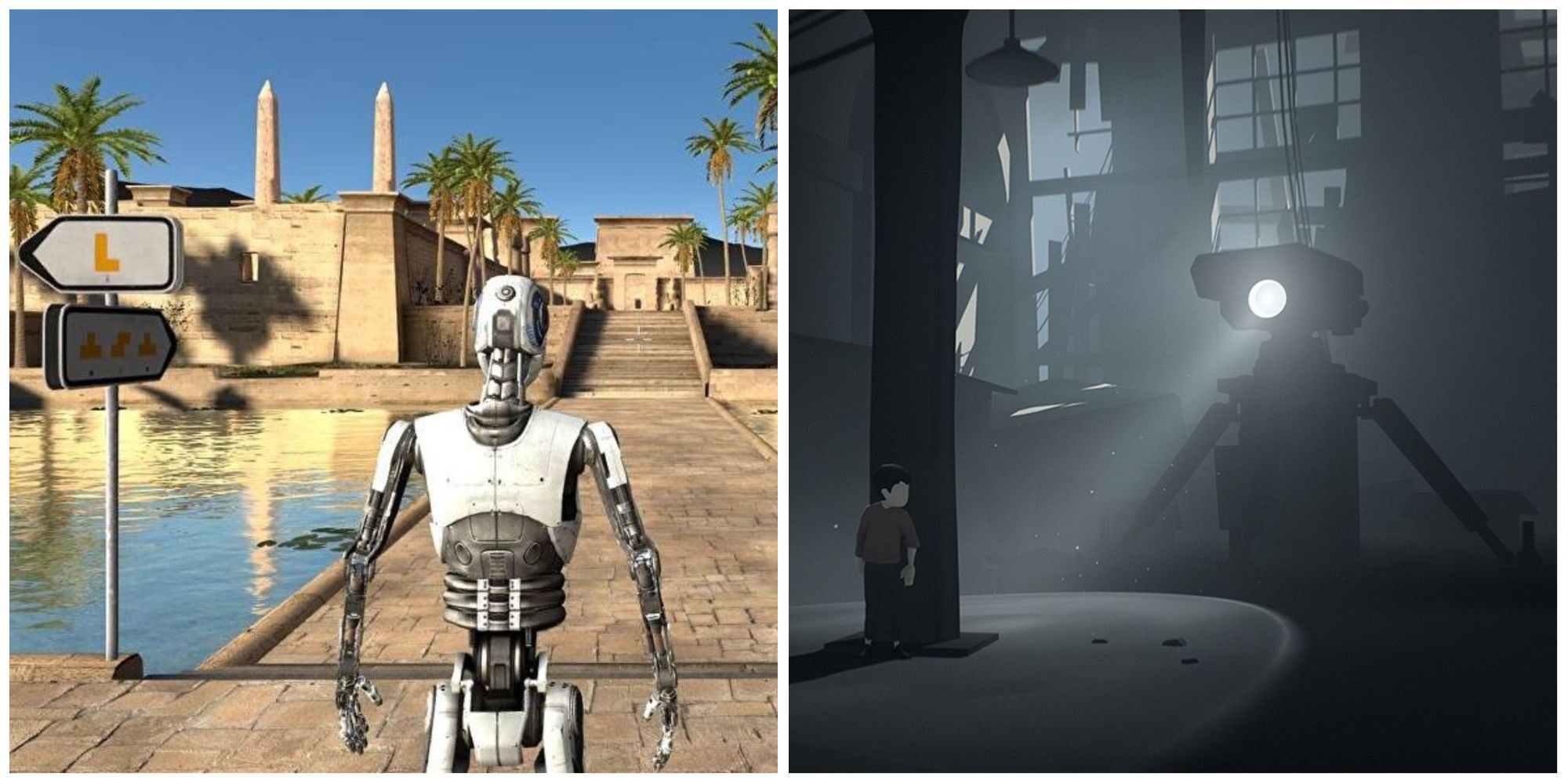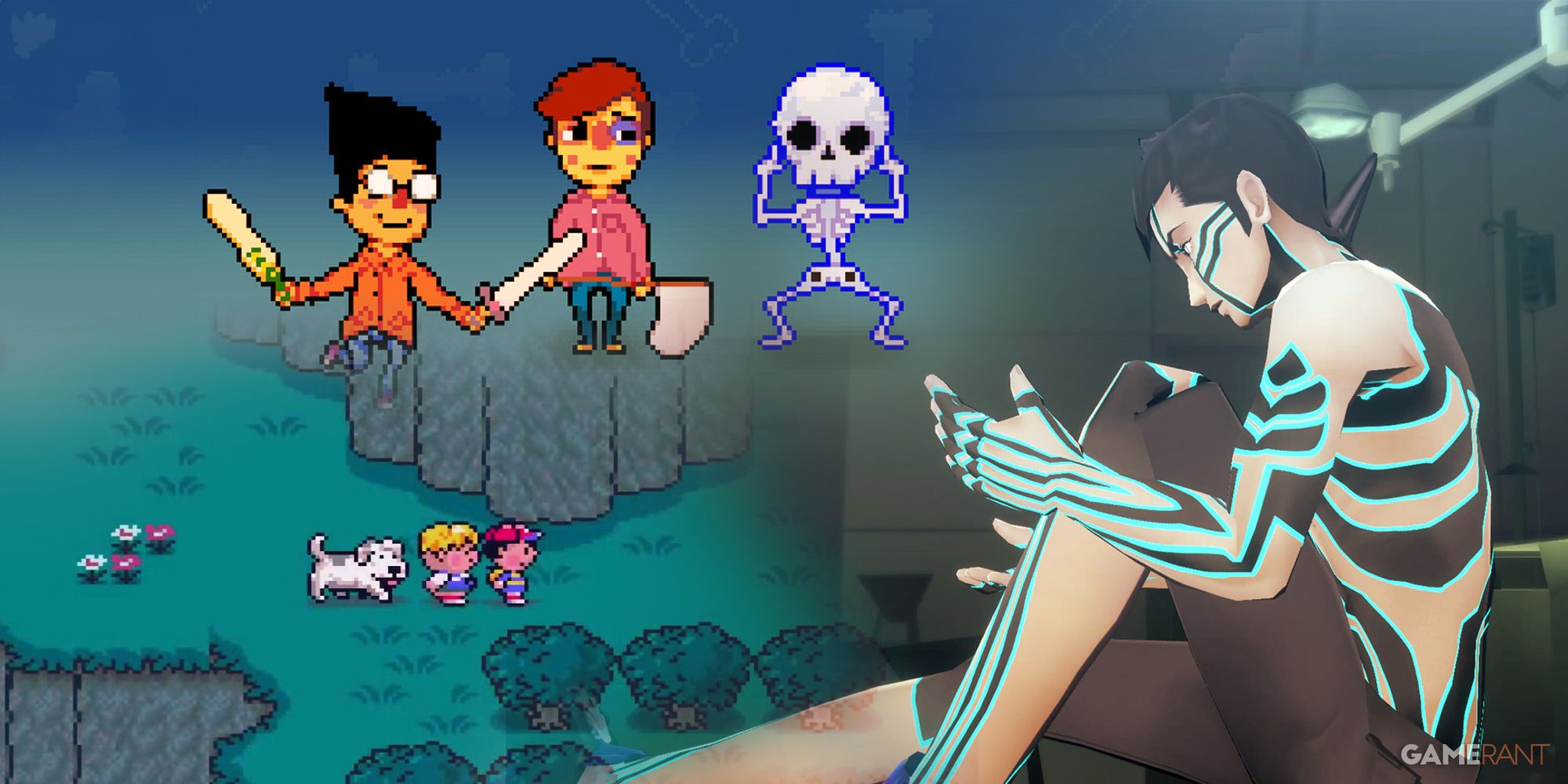Summary
- Inscryption deftly deceives players with genre shifts and ARG elements, adding a layer of psychological magic to the experience.
- The Talos Principle lures players with serenity, only to reveal a simulation built on human extinction that challenges obedience and free will.
- The Stanley Parable gaslights players with sarcastic manipulation, illustrating agency, expectation, and the illusion of choice in a meta-narrative.
Some games trick players because of bugs. Others because of bad tutorials. But then there are those that lie on purpose—games that look players dead in the eyes and twist the truth for the sake of a narrative rug-pull, a mechanical surprise, or just sheer mischief. These aren’t just clever; they’re designed to be deceitful in the best possible way, turning misinformation into a core part of the experience.
Related
10 Games With Cruel Twist Endings
Some games have straightforward endings, while others have cruel plot twists that change everything.
Whether it’s messing with expectations, breaking the fourth wall, or pretending to be something they’re not, these games play with their narrative in the most deceitful way possible. Here are the best games that knew they were lying and loved every second of it.
6
Inscryption
“Choose Your Deck Wisely,” Said The Game That’s Not Really A Card Game
At first glance, Inscryption looks like another spooky deck-building roguelike. Cards on a table, a mysterious figure across from the player, some light horror vibes. Pretty normal stuff, until the stoat starts talking.
From the moment that first card opens its mouth, it’s clear something’s not right. The game doesn’t just break the fourth wall, it grinds it into dust. The cabin setup is just the first layer of a deeply nested matryoshka doll of genres and lies. One minute, players are tweaking their deck to survive Leshy’s sadistic table games, and the next, they’re diving into found footage horror or exploring top-down RPG segments straight out of the ‘90s.
The way Inscryption lies is methodical. It sets rules, then quietly breaks them. It teaches players how to survive, then pulls the rug out with a genre shift that reframes everything that came before. And that’s not even counting the ARG elements that bleed into real-life file manipulation. It’s as much a psychological magic trick as it is a game.
For players who thought they were signing up for a simple roguelike, Inscryption quickly makes one thing clear: it wants players to believe that. It needed to lie, because the truth would’ve ruined the surprise.
5
The Talos Principle
“You Were Never Supposed To Be Here” Hits Different When The Game Means It
There’s something eerily serene about The Talos Principle. The sunlit ruins, the ancient structures, the omnipresent voice of Elohim telling players to solve puzzles and ascend—it all feels like it’s reaching for something spiritual. But beneath the philosophical tone and the beautifully designed logic puzzles, this game is quietly feeding players a lie.
Elohim speaks with authority, assuring players that obedience will lead to enlightenment. But the deeper players go, the more cracks begin to show. Forbidden terminals appear in corners of the world, offering fragments of lost history. AI logs, system overrides, and corrupted messages hint that this divine playground isn’t divine at all—it’s a simulation built atop human extinction.

Related
8 Games That Deconstruct The Puzzle Genre
Some puzzle games go beyond the genre by deconstructing it, producing a more engaging and thought-provoking journey
The game’s lie is its promise of purpose. It asks players to accept its rules without question, all while seeding rebellion as a quiet alternative. Those who defy Elohim, who climb the mysterious tower he warns against, discover that free will is the real test, not the puzzles.
Where most games reward players for following the path laid before them, The Talos Principle dares players to question whether they should be on that path at all.
4
Stanley Parable
The Only Game That Gaslights Its Players Into Questioning Reality
What starts as a story about a man in an empty office quickly turns into a game that actively resents the idea of being played correctly. The Stanley Parable doesn’t lie to the player in one clean stroke—it lies constantly, gleefully, and with layered sarcasm so thick it borders on performance art.
The Narrator tells players what Stanley is doing. Or rather, what he should be doing. But the moment players choose a different door, or refuse to move, or do something absurd like walking in circles, the narrative bends, breaks, or combusts entirely. The game adapts around disobedience, spinning increasingly surreal and often hilarious consequences for players simply existing in contradiction.
There’s no “winning” in The Stanley Parable. Every ending is a commentary on agency, expectation, and the illusion of choice. The Narrator tries to guide, then manipulates, then begs, then mocks. All of it stems from a core deception: that there’s a story here with a point, and that players can find it if they just follow the rules. But the real story is in the refusal to comply. And the game knows that. It always did.
3
Undertale
The One Where Even Your Mercy Can Be Weaponized
There’s lying, and then there’s Undertale. From its first moments, it sells itself as a quirky retro RPG with a harmless sense of humor. The kind of game where flowers talk, skeletons crack jokes, and love is measured in “LV.”
But the second players pay attention, it becomes clear something’s off. That “LV” stands for “Level of Violence,” not experience. That enemies don’t have to die. That mercy is more than a mechanic—it’s a choice that reshapes the world and how its characters treat the player.
And then there’s Flowey. That smiling, innocent flower who outright tells players that in his world, “it’s kill or be killed.” He’s not just the face of deception in Undertale, he’s the meta voice of it. He remembers what players did on past runs. He calls them out for resets. He breaks the game’s rules because he knows players are trying to play by them.

Related
6 Best Games To Play If You Love Undertale
Undertale may be one-of-a-kind, but there have been game studios before and since that set out to capture the same kind of offbeat magic.
Whether players go full Genocide or stick to the Pacifist route, Undertale remembers. It weaponizes its own save system to make the consequences stick. And the game lies to protect its illusion of innocence, right up until it’s ready to drop the curtain and reveal that every decision mattered more than it seemed.
2
There Is No Game: Wrong Dimension
“There Is No Game,” Said The Game That Absolutely Had One
Few games commit to a bit as hard as There Is No Game: Wrong Dimension. It starts by telling players not to play it. Literally. A booming narrator tries to shut things down before they begin, insisting there’s nothing to see here, no fun to be had, and definitely no game in sight.
Of course, that’s the first lie. What follows is an absurd, multi-genre puzzle comedy that constantly reinvents itself. One minute it’s a point-and-click adventure, the next it’s parodying mobile games, then suddenly it’s trapped in a fake RPG. Players solve puzzles not just within the game world, but by manipulating menus, dragging UI elements, and breaking every rule of interface design.
The charm lies in how deeply it commits to misdirection. The narrator lies constantly—not out of malice, but out of desperation. He’s trying to keep things from unraveling, to stop players from pulling on the threads. But curiosity always wins, and that’s exactly what the developers want.
There Is No Game: Wrong Dimension doesn’t just lie about being a game. It lies as a game, disguising truth as joke after joke until players suddenly realize they’ve been emotionally invested this whole time.
The Game That Made Snake A Legend By Making Raiden A Lie
When it comes to deception in games, nothing touches the scale of what Metal Gear Solid 2 pulled off. The trailers showed Snake on a tanker. The box art featured him front and center. Even the demo was pure Snake. And then, an hour into the full game, he’s gone—and players are suddenly controlling Raiden, a rookie with anime hair and no clue what’s going on.
It was the bait-and-switch of the generation, and it wasn’t just for shock value. Hideo Kojima designed the entire twist as a commentary on player expectation, media manipulation, and the idea of heroes being shaped more by legend than reality. Snake becomes a background myth. Raiden, despite being green and unsure, ends up walking the same path, echoing Snake’s actions until he becomes his own kind of soldier.
The lies in Sons of Liberty don’t stop there. The Colonel starts glitching. The objectives contradict each other. Codec calls devolve into nonsense. Players are told to turn the console off, delete their save files, or that they’ve been playing a simulation the whole time. It’s gaslighting as game design. What looked like a straightforward sequel became one of the most subversive experiences of its era. Not because it tricked players once, but because it never stopped.

More
7 Open-World Games With The Most Unpredictable Events
These open-world games excel in delivering emergent gameplay, offering players unexpected encounters that feel truly unique.







